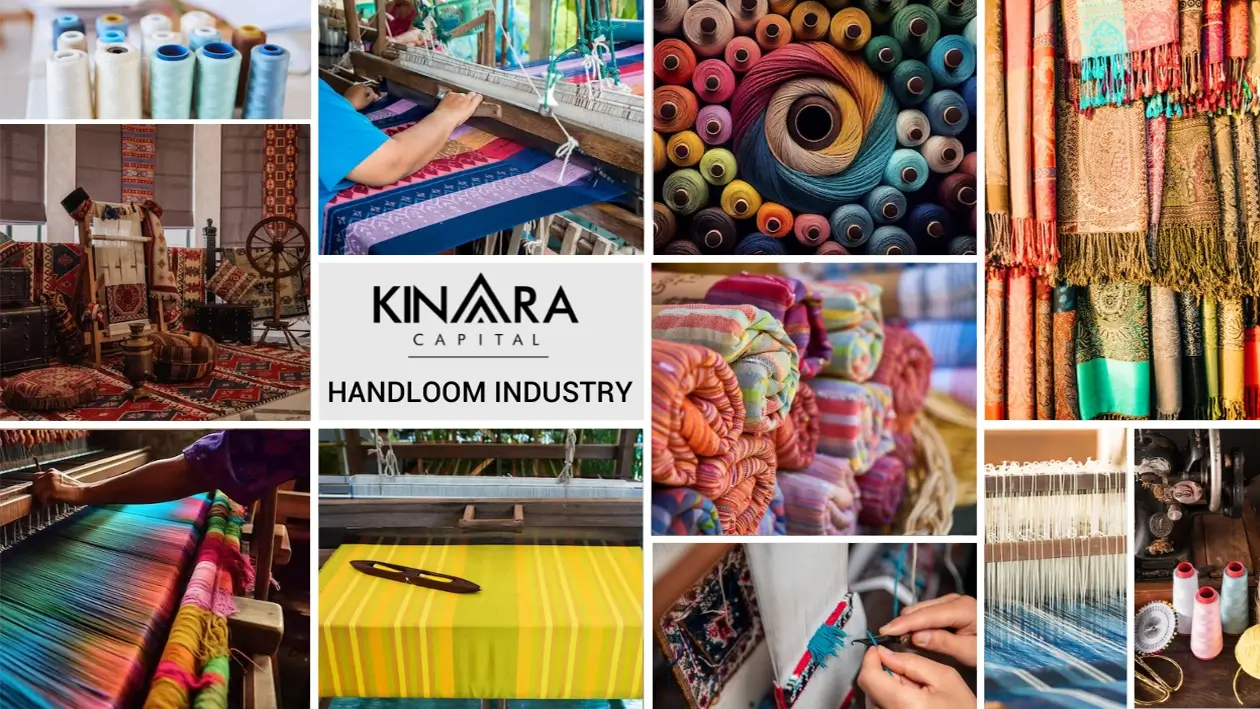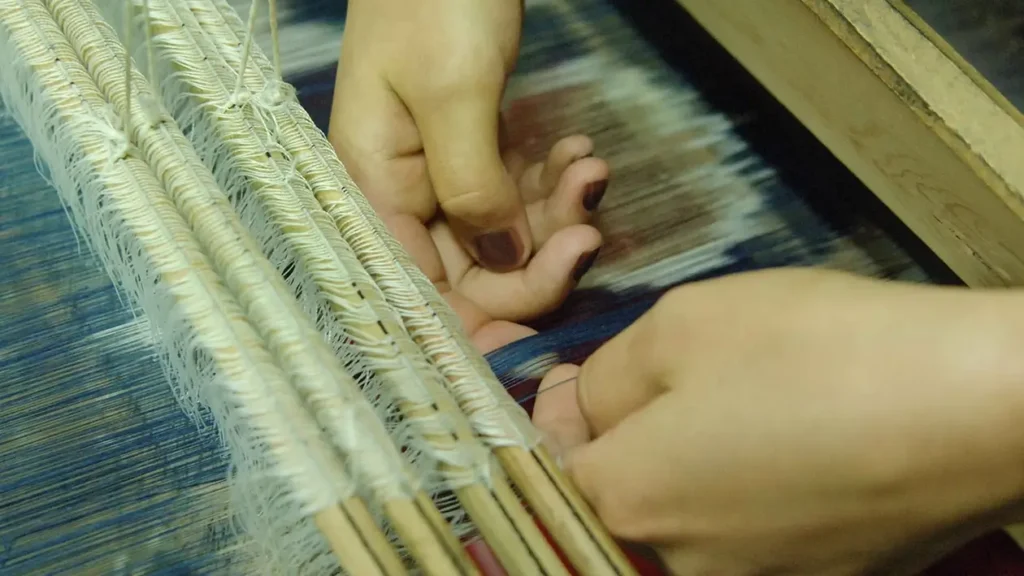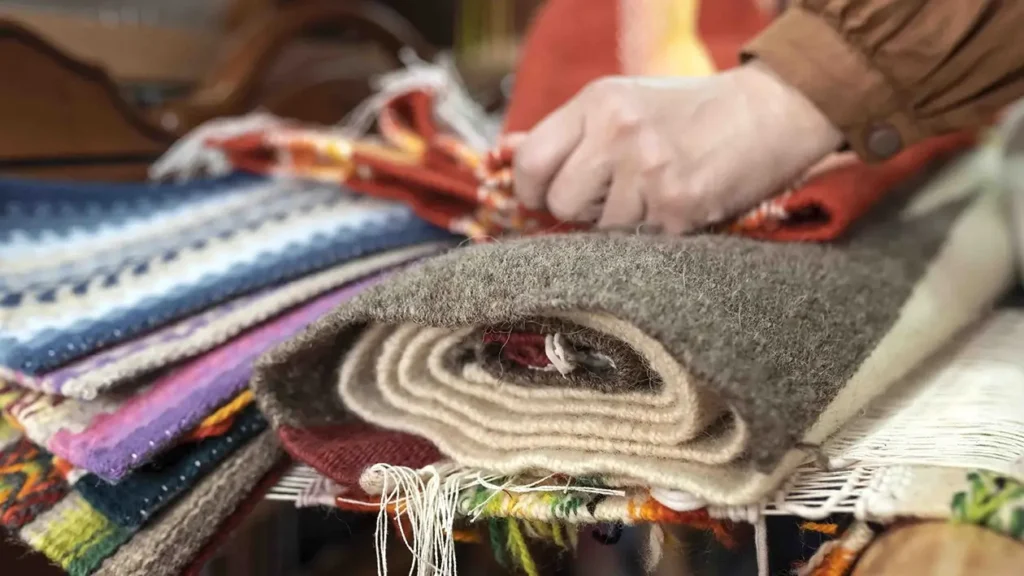
Micro, small, and medium enterprises (MSMEs) are small businesses that play a vital role in the handloom industry in India. They employ millions of people, mostly women, and they are responsible for producing a wide variety of hand-woven products. MSMEs are important for this sector because they are flexible and adaptable and can respond quickly to changes in market demand. They are also able to produce high-quality products at competitive prices.
The handloom industry in India is not merely an economic sector but a living heritage that embodies the country’s cultural diversity, creativity, and craftsmanship. Its significance goes beyond economic numbers, as it empowers artisans, preserves traditions, and connects India’s past with its future. Recognising and supporting the handloom industry is crucial for fostering sustainable development, preserving cultural heritage, and empowering the communities that sustain this timeless art form.
On the 9th National Handloom Day on August 7th, let’s acknowledge huge handloom community in the country for their contribution to carrying on the traditional heritage and ensuring financial stability. Let’s explore the major aspects that make the handloom industry what it is today.
India’s handloom industry is a treasure trove of cultural heritage, with each region offering its unique weaving techniques, designs, and motifs. It is deeply intertwined with India’s history, traditions, and identity, making it an integral part of the nation’s heritage. Understanding the importance of the handloom industry in India requires exploring its historical roots and recognising its socio-economic impact.
Skilled artisans have been practising hand spinning, weaving, and printing techniques for thousands of years and have been passed down through generations, preserving ancient craftsmanship and traditional knowledge. The industry’s products, such as sarees, shawls, fabrics, and garments, are not merely textiles but living expressions of India’s artistic and cultural legacy. The sector is also the second-largest employment provider, employing 3 million people directly and indirectly.
India exports a wide range of hand-woven products, including mats and mattings, carpets, rugs, bedsheets, cushion covers, clothing, and silk scarves. The major export centres are Karur, Panipat, Varanasi, and Kannur.
India has a robust handloom industry that exports its products to over 20 countries worldwide. The European Union constituted 18% of India’s handloom exports, with Bangladesh and the UAE accounting for 12% and 6%, respectively. Other countries that import Indian handloom products include Canada, Brazil, Greece, Belgium, Chile, Denmark, Thailand, and Sri Lanka, which accounted for 37% of India’s total handloom exports in 2021-22.
India is home to a rich and diverse tradition of handloom weaving. From sarees to hand block printing, there are many sub-sectors/speciality handlooms that offer a wide range of products. Sarees are the most popular handloom product in India, and they come in a variety of styles and designs. Here are a few examples of India’s rich heritage of handloom sarees:
Paithani sarees are a type of handwoven silk saree that originated in the Paithan town of Maharashtra. They are known for their intricate designs, which are often inspired by nature. Paithani sarees are also known for their luxurious feel, and they are often worn by brides on their wedding day.
Bandhani sarees are a type of tie-dyed saree that is popular in Gujarat. They are known for their vibrant colours and intricate patterns. Bandhani sarees are often made from cotton or silk, and they can be worn for both formal and informal occasions.
Mysore silk sarees are a type of silk saree that is produced in the Mysore region of Karnataka. They are known for their soft, lustrous fabric and their intricate designs. Mysore silk sarees are often worn by brides on their wedding day, and they are also popular for other formal occasions.
Kalamkari sarees are a type of hand-painted saree that is produced in the Andhra Pradesh region of India. They are known for their intricate designs, which are often inspired by Hindu mythology. Kalamkari sarees are often made from cotton or silk, and they can be worn for both formal and informal occasions.
Other popular handloom products include kurtas, dhotis, shawls, stoles, bags, and accessories. Hand block printing is a traditional printing technique that uses carved wooden blocks to apply patterns to fabric. It is widely used for linens and household items like curtains and mats.

The handloom sector in India is one of the country’s oldest and largest cottage industries, with 23.77 lakh looms. Even though the sector has several unique strengths, they also face many challenges. Some of them are:
Power looms can produce textiles more quickly and cheaply than handlooms. This has led to declining demand for hand-woven products as consumers seek the cheapest option.
The cost of raw materials, such as yarn and dyes, has risen in recent years. This has put a strain on the finances of MSMEs, as they have to pass on the increased costs to their customers.
Small businesses face difficulty in accessing markets for their products. This is because they have limited resources and are often located in rural areas, making it difficult for them to reach large retailers or wholesalers.
MSMEs often lack the training and technology they need to produce high-quality products that consumers demand. They may not have the resources to train their employees on new technologies, which can prevent them from taking advantage of the latest innovations. The cost of technology can also be a barrier for small businesses. This can make it difficult for them to compete with larger companies with access to these resources.
MSMEs in the handloom industry also face a lack of access to financing and resources. This can hinder their ability to create unique, handcrafted textiles. However, with the support of fintech companies like Kinara Capital, these businesses can receive the necessary resources to preserve India’s handloom heritage and contribute to the growth of this critical industry.
The Indian government initiated some programmes to promote the industry, which are mentioned below.
The NHDP is a government program that aims to promote the handloom industry in India. The program has several components, including the
The MAI is a government program that aims to promote the export of handloom products from India. The program was launched in 2018 and will be effective until March 2026. The MAI is based on a product-specific approach, with market studies and research to identify potential markets for these products.
The main activities of the MAI include marketing products internationally, building capacity, supporting statutory compliances, carrying out studies, developing projects, providing portals for foreign trade facilitation, and supporting smaller and traditional industries.

Small businesses are important for the handloom industry because they provide a flexible and adaptable production system that is well-suited to the needs of the industry. Here’s what the industry needs to grow further:
Financial assistance to small businesses through loans, grants, and subsidies can help MSMEs invest in new technology and training. It will enable them to produce high-quality products that consumers demand.
The handloom industry is a major source of employment for women in India. Providing women with access to training, finance, and markets is essential to promote small businesses in this industry. Through these resources or proper guidance, women entrepreneurs can start and grow their businesses.
One of the defining aspects of this sector is its use of traditional designs. Supporting the development of new traditional designs and encouraging weavers to incorporate them into their products can inspire them to create even more masterpieces.
Handloom is a sustainable industry and promoting eco-fri practices, such as using organic dyes and yarns, can greatly support them.
Creating opportunities like exhibitions, fairs, and online platforms can help them showcase their products. This will help to raise awareness of hand-woven products and increase demand for them.
Providing training and technology to MSMEs in the industry can help them to improve their skills and productivity. It will enable them to compete with larger companies.
The government can review government policies that are affecting the handloom industry. This will help to ensure that these policies are supportive of small businesses and that they do not create unnecessary barriers to entry.
By taking these steps, the government and the private sector can help MSMEs in the handloom industry overcome their challenges and continue contributing to the Indian economy.
There are a number of emerging trends that are likely to benefit the handloom industry. The growing demand for sustainable and ethically-sourced products, increased access to markets, and emerging trends in fashion are some of the factors that will influence the future of the industry.
Consumers are increasingly aware of the importance of sustainable and ethically-sourced products. Therefore, handloom products are seen as a sustainable and ethical alternative to mass-produced textiles. This is likely to boost demand for handloom products in the future, both domestically and internationally.
The government is also working to increase access to markets for handloom products. This includes promoting these products through exhibitions and fairs and supporting weavers to export them. This will, in turn, increase sales for weavers and handloom business owners, and help support the handloom industry as a whole.
There is a growing trend towards traditional and ethnic wear in fashion. This is likely to boost demand for hand-woven products, as they are seen as a symbol of traditional Indian culture.
The Handloom industry is well-positioned to capitalise on the growing demand for sustainable and ethically-sourced products, as well as the government’s support and increasing access to markets.
The handloom industry in India is a significant part of the country’s economy and culture. It employs millions of people, mostly women, and it is a source of pride for the nation. However, the industry is facing several challenges, like competition from power looms, rising costs of raw materials, and lack of access to markets.
In order to overcome these challenges and ensure the future of the handloom industry, Non-Banking Financial Companies (NBFCs) like Kinara Capital provide business loans to the MSME sector. This can help business owners invest in new technology and training, which will enable them to produce high-quality products that are in demand by consumers. Financial assistance will also help weavers to access markets for their products. This can be done by providing them with information about potential buyers and helping them connect with retailers and wholesalers.
Kinara Capital is one of the leading fintech firms in India that provides collateral-free loans to the MSME sector. Small businesses should start by evaluating their business loan eligibility to apply for an MSME loan. They can do it in just 1-minute by starting the digital-first application process by downloading myKinara App. Eligible MSME entrepreneurs can submit the necessary documents and the loan amount will be disbursed digitally to their bank account within 24-hours.
Kinara Capital also provides multilingual doorstep customer services to small businesses interested in learning more and needing assistance to apply. Also, we have a dedicated customer support team available between Monday – Friday (9.30 AM – 6.00 PM) at our toll free number 1800-103-2683 for any questions or assistance. This ensures that entrepreneurs can get the help they need throughout the loan process.
